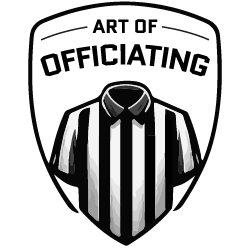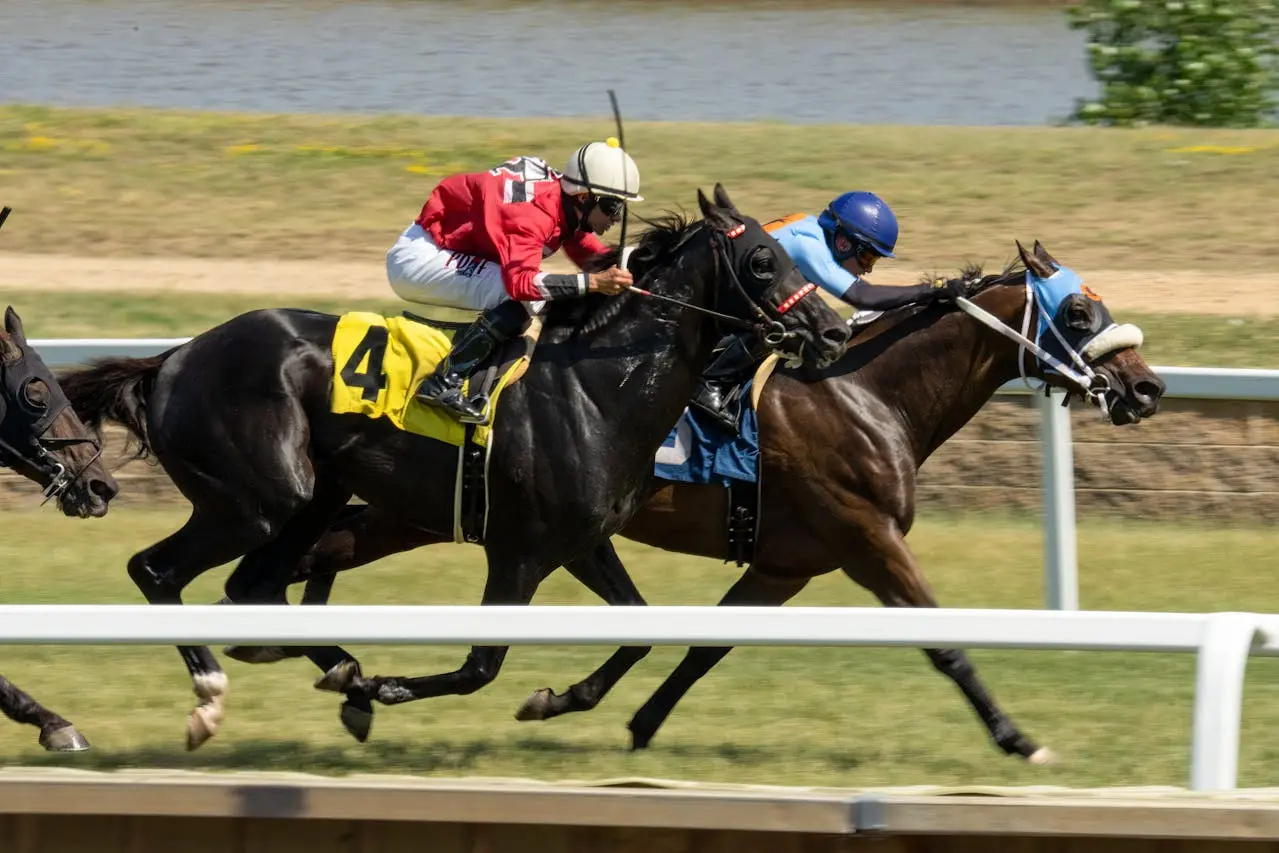Photo Finish: “A race or finish in which contestants are so close that a photograph of them as they cross the finish line has to be examined to determine the winner.”
Merriam-Webster Dictionary
To properly adjudicate a race where competitors cross the finish line at nearly the same time, officials place a camera or electronic sensors at the finish line. It would be ridiculous to place a camera a few feet short of the line as that position would not deliver an accurate decision. To belabor the point, the camera must be positioned at the finish line as the contestants cross the line.
The NFHS rule book does not directly mention a finish line. However, it does reference two significant lines which can be compared to a racing finish line. The line to gain and the goal line are football’s finish line. We also refer to these as “money lines.”
This is a Fundamental Wing Precept:
Just as a camera must be positioned at the finish line to adjudicate a photo finish, football officials must make every effort to be positioned on the line-to-gain and goal line (the two money lines) when the runner arrives.
Have the finish line camera (your eyes) at the finish line (the goal line or line-to-gain) when the contestant (the runner) arrives. If you are at the money line when the runner arrives, your credibility goes way up. If you are hesitant or slow and the ball arrives first at the money line, you are simply guessing and you cannot with confidence rule on the position of the ball when it becomes dead by rule.
High school officials do not have the luxury of instant replay, so our calls will stand. We can greatly enhance our credibility when we are correctly positioned to officiate the money lines.
Know the Line-to-Gain Location
Knowing the line-to-gain position is a component of your pre-snap routine. You can’t get to the line-to-gain if you don’t know its proximity to the line of scrimmage. A good linesman will never have to look over his shoulder to determine the front stake’s position.
The ball is snapped from the B-34 and the line-to-gain is the B-38. The linesman looks twice at the chains after the ball is dead. At the snap, he should move immediately to the B-38 and be in position to rule on the forward progress spot relative to the line-to-gain. He must position the chains 2 yards from the sideline and move all players and coaches out of the restricted area.
The Goal Line as a Money Line
Each state’s mechanics manual will specify which official is responsible for the goal line based on where the ball is snapped. For example, according to the Colorado Mechanics manual, with a 5-person crew, the wings are responsible for the goal line when the ball is snapped inside the B-10.
Between the B-10 and the B-5: If the tackle run-blocks, they must make every effort to be at the goal line when the runner arrives. There is no reason to hesitate or move with the ball as the runner surges toward the goal line.
In this clip, the ball is snapped inside the B-10 and the back judge has the end line. The play develops slowly, and the linesman has plenty of time to physically set up at the pylon and wide enough to be out of harm’s way. He instead hesitates and is not at the goal line when the runner is downed. At the end of the clip, he has his head down. Always keep your head up with eyes on the players.
Here is a good example of the wing beating the runner to the goal line, then working back to the forward progress spot.
In this video, the ball is snapped at the B-7. The linesman hesitates and then tries to move with the ball instead of racing to the goal line and backing up to create a cushion between himself and the players. He rules touchdown despite not being on the goal line before the ball arrives and then getting hit by the players.
As part of the pregame, move the goal line marker (not the pylon, but the marker that identifies the GL) farther back than the other yard markers. Before the snap, ensure everyone is far away from the goal line (notice one of the chain crew personnel is set up a yard short of the goal line. He should not be there).
In this clip, the line judge is in position at the pylon as the runner approaches. But then for some reason he gives up his “camera on the finish line” position and moves to the 1-yard line. At the 7 second mark in the video, the runner’s knee is down at the 1 yard line as he extends the ball. Was the nose of the ball over the goal line? To provide the best look, the line judge should back up farther from the pylon (to create the cushion) instead of moving off the goal line.
Here is the proverbial “1 in a million” scenario. The ball is snapped on the B-10 and the back judge is on the end line. The linesman does not race to the goal line (he walks) and the ball is fumbled at the goal line. There is no “photo finish camera” (an official’s eyes) at the goal line. The linesman does not advance onto the field and sell his ruling. He walks to the middle of the field when summoned. The referee indicates the play resulted in a touchback. I don’t know if the call was correct, but the linesman’s mechanics do not help “sell” the call.
Between the B-5 and the goal line: The wing officials do not observe the tackle to determine movement; they go immediately to the goal line.
In this video, the wing moves quickly to the goal line at the snap and is in position to rule on the ball’s location when the runner is downed. Instead of remaining close to the sideline, he should back up 2-3 yards to create a cushion. (That is why it’s important to keep ball runners, photographers, and the chain crew back and away from the sideline.)
He does a good job selling the forward progress spot, but he looks down at the ground instead of keeping his eyes on the players.
In this play, the line judge moves to the goal line at the snap (don’t bounce!). When the runner is downed short of the goal line, he “sells” his spot by pinching to the ball. Do not push around players. (When you move around a player, you compromise the integrity of your spot.) He should have his hand in the air to indicate the 40-second play clock should start.
He should also ask for and spot the ball instead of pointing to the ground to show the umpire where to spot the ball. Wings do not need to spot the ball inside the hash; when the wings spot the ball; they should move to resistance, stop, ask for the ball, and spot the ball at your feet.
When the Back Judge Has the Goal Line
In Colorado, with a 5-person crew, the back judge has the goal line when the ball is snapped outside the B-10. It’s important for the crew to communicate (with radios or hand signals) who has the goal line when the ball is snapped in the red zone.
In this video, the ball is snapped from the B-13, so the back judge is responsible for the goal line. His position at the snap should be halfway between the goal line and the end line. When the receiver catches the ball on the B-9, he should move forward to the goal line. Unfortunately, at the end of the play, there is no official on the goal line and it appears the back judge is asking for help from the wing. The call was correct, but the optic was not good.
In this video, the ball is snapped from the B-16. The back judge’s presnap position is halfway between the goal line and the end line. When the receiver catches the ball on the B-14, the back judge moves forward to the goal line. In Colorado, the correct mechanic is the linesman will punch in to indicate the runner remained inbounds and the back judge will signal touchdown. The linesman signals touchdown, but that is a minor issue. The “win” here is the back judge is on the goal line when the runner arrives.
The Line-to-Gain as a Money Line
The Colorado Mechanics Manual does not stipulate wing movement near the line-to-gain. On our crew, the wings move directly to the front stake when the ball is snapped within 4 yards of the LTG and the linemen run block.
This is what “right looks like.” The wing steps to the line to gain and is prepared to rule on the forward progress spot.
The ball is snapped 3 yards from the line-to-gain. At the snap, the linesman and line judge should immediately step to the line-to-gain. When the runner is downed at the line-to-gain, both officials should stop the clock and one official should spot the ball.
Here is almost the same scenario. At the snap, the linesman must move immediately to the line-to-gain and be prepared to rule on that “money line.”
The Line-to-Gain and the Goal Line are Close to Each Other
Which “money line” is most important? The goal line of course. It makes no sense to stop at the line-to-gain when the goal line is only yards away. The wings’ immediate movement should be to the goal line; they can then retreat from the goal line when the ball is dead short of the goal line to mark forward progress.
In this clip, the ball is snapped about a foot short of the line-to-gain and the goal line is 5 yards away from the ball. The linesman focuses on the line-to-gain instead of proceeding to the goal line at the snap. When the runner breaks free and moves toward the goal line, the linesman races to catch up. The proper mechanic is to move directly to the goal line at the snap, and then work back to the ball.
This play is almost identical to the previous play. The priority is the goal line, not the line-to-gain. The linesman must advance to the goal line and then work back as needed. Fortunately, the runner advances untouched to the end zone, so the linesman’s incorrect position does not impact his ruling.

